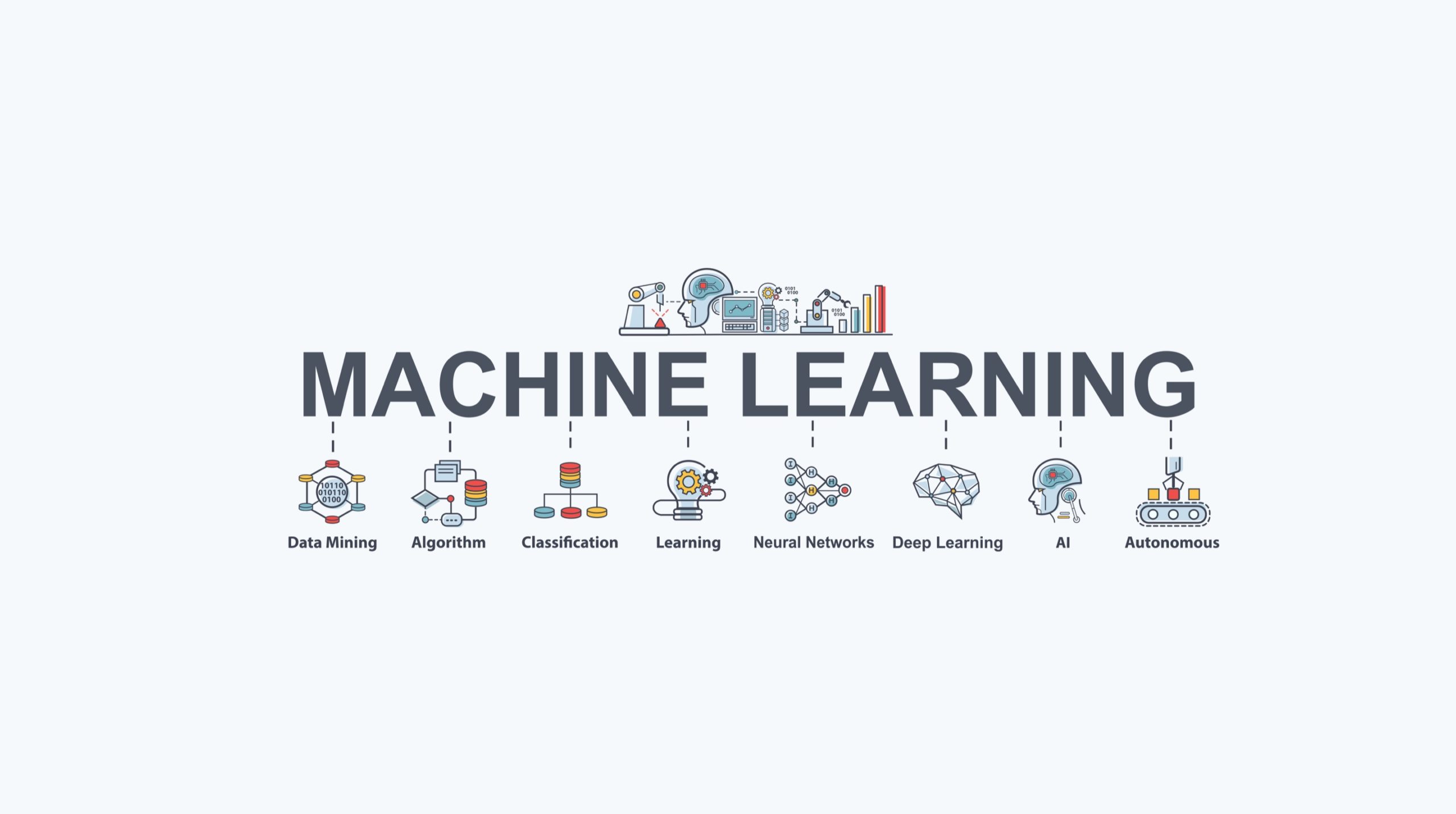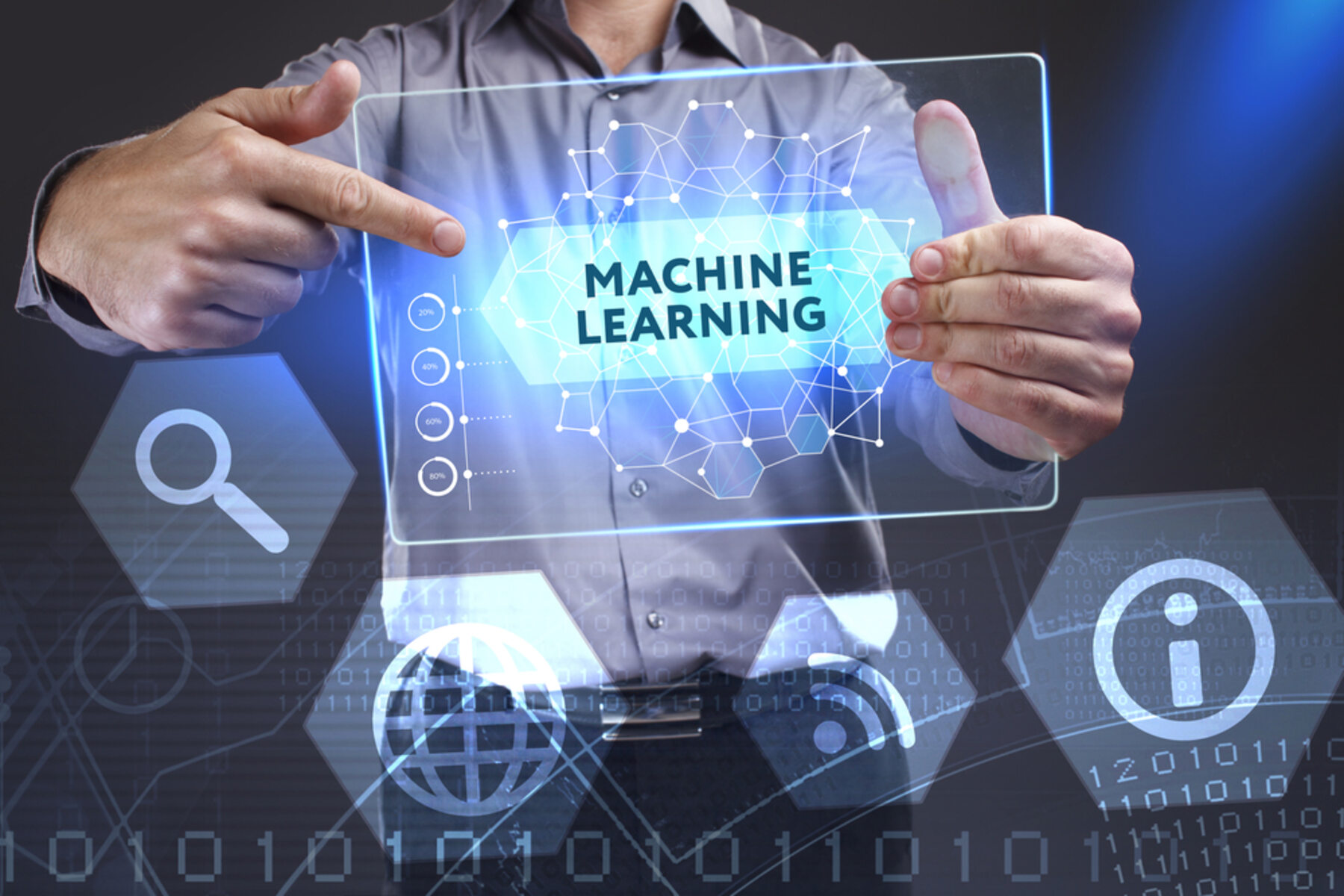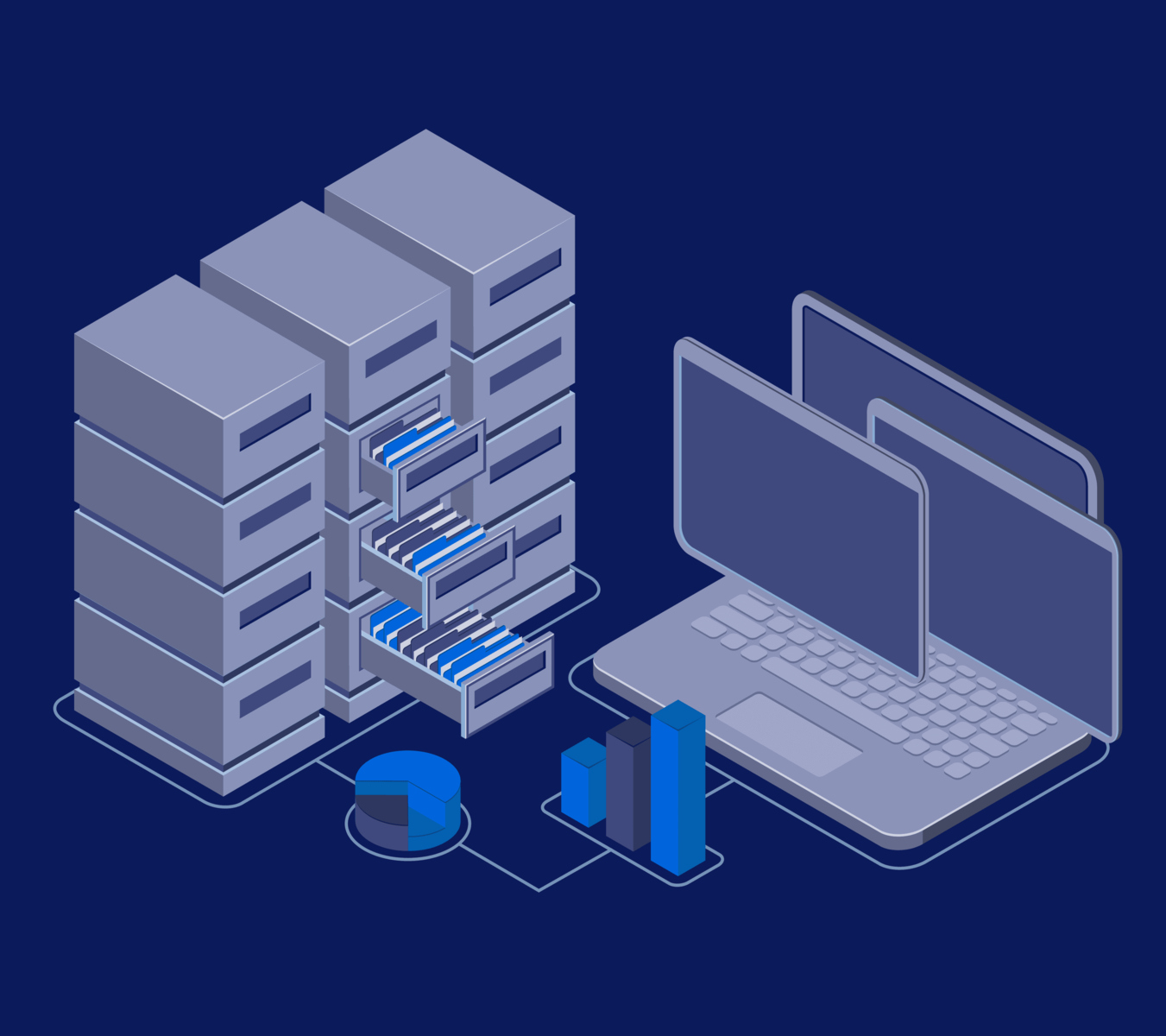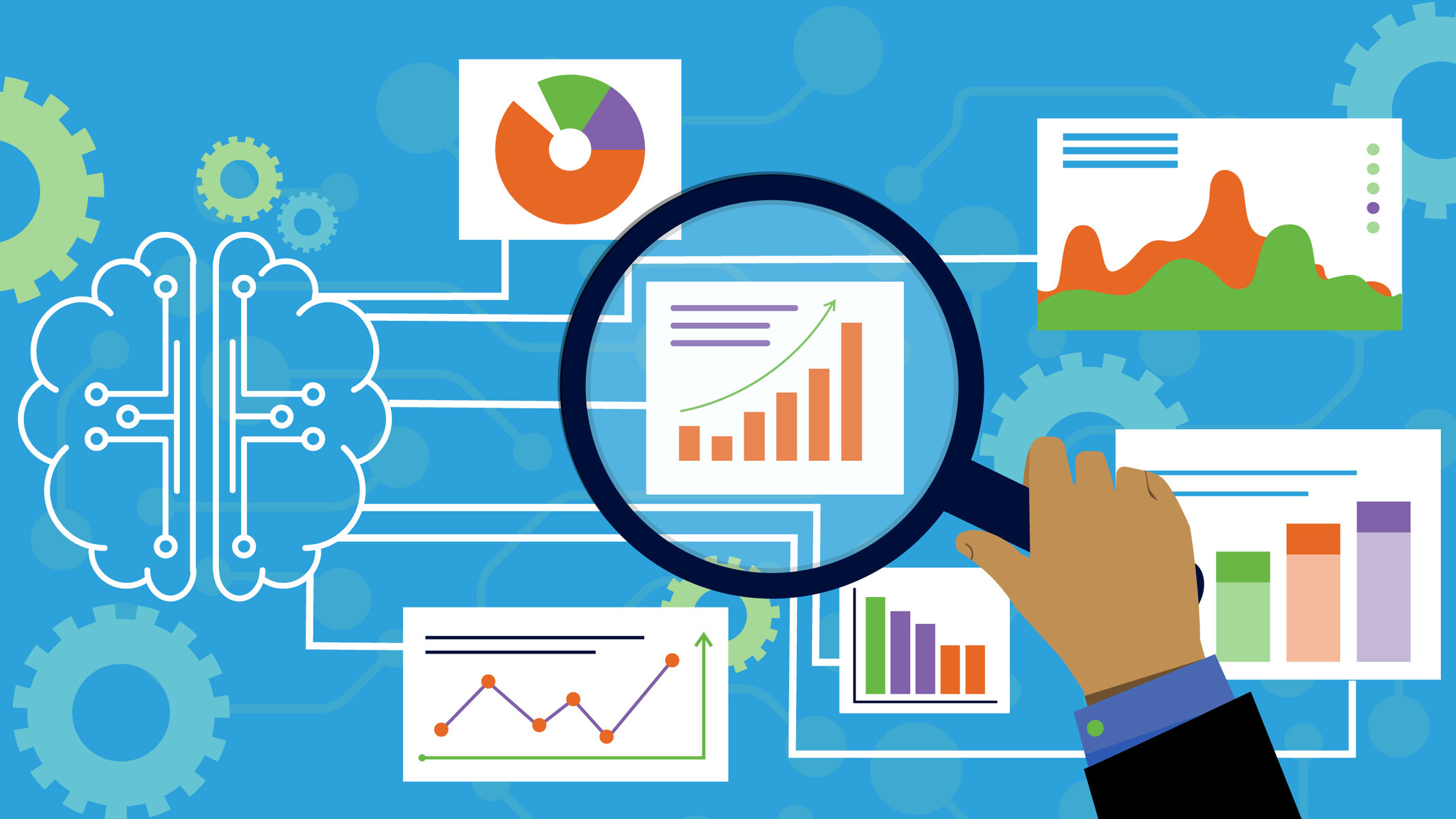Introduction
Machine learning has revolutionized various industries and transformed the way we approach problem-solving and decision-making processes. This cutting-edge technology enables computers to learn from data and improve their performance without being explicitly programmed. As a result, it has opened up endless possibilities for applications across different domains.
Machine learning algorithms utilize statistical models and computational power to analyze and interpret complex patterns and make accurate predictions or classifications. They can process vast amounts of data in a relatively short time, which makes them immensely powerful and capable of handling tasks that were previously considered impossible or highly labor-intensive.
The potential applications of machine learning are vast and diverse, ranging from predicting stock market trends to enabling self-driving cars. By leveraging machine learning algorithms, businesses and industries can gain valuable insights, automate tasks, improve operational efficiency, and enhance customer experiences.
In this article, we will explore some of the key applications of machine learning that are transforming industries and driving innovation. From predictive analytics to virtual personal assistants, we will delve into the ways in which machine learning is revolutionizing various sectors and shaping our future.
It is important to note that while machine learning offers immense opportunities, it also comes with challenges and ethical considerations. The responsible use of machine learning algorithms and ensuring transparency and fairness in decision-making are critical to harnessing its full potential for the betterment of society.
Now, let’s dive into the world of machine learning and discover its incredible applications that are reshaping industries and transforming the way we live and work.
Understanding Machine Learning
Before exploring the applications of machine learning, it is important to understand the key concepts and principles underlying this transformative technology. Machine learning is a branch of artificial intelligence that focuses on developing algorithms that allow computers to learn and make predictions or take actions based on data.
At its core, machine learning relies on statistical models and algorithms to identify patterns in data and make accurate predictions or classifications without being explicitly programmed. This is achieved through a two-step process: training and inference. During the training phase, the machine learning model is exposed to a large dataset, where it learns to recognize patterns and make accurate predictions. In the inference phase, the trained model is used to make predictions or take actions on new, unseen data.
There are three main types of machine learning: supervised learning, unsupervised learning, and reinforcement learning. In supervised learning, the model is trained on labeled data, where the desired output is provided alongside the input. The model learns to map inputs to outputs, allowing it to make accurate predictions when presented with new data. Unsupervised learning, on the other hand, deals with unlabeled data, where the model aims to discover hidden patterns or structures in the data. Reinforcement learning involves learning through trial and error, where the model receives feedback in the form of rewards or penalties to optimize its actions.
Machine learning algorithms can be further categorized into various types, such as decision trees, neural networks, support vector machines, and many more. Each algorithm has its own strengths and weaknesses, making it suitable for different types of problems and datasets.
To ensure the effectiveness of machine learning models, it is crucial to have high-quality, diverse, and representative datasets for training. Data preprocessing and feature engineering are essential steps, as they involve cleaning, transforming, and selecting the most relevant features from the dataset to improve the model’s performance. Additionally, model evaluation and validation techniques are used to measure the accuracy and generalization capabilities of the trained model.
Machine learning is a rapidly evolving field, with constant advancements in algorithms, techniques, and tools. From traditional machine learning methods to more recent developments in deep learning and neural networks, the possibilities continue to expand.
Now that we have a fundamental understanding of machine learning, let us delve into some of its intriguing applications in various industries.
Applications of Machine Learning
Machine learning has revolutionized numerous industries by enabling automation, improving decision-making processes, and uncovering valuable insights from vast amounts of data. Let’s explore some of the most prominent applications of machine learning across various domains:
- Predictive Analytics: Machine learning algorithms excel at analyzing historical data to make predictions about future outcomes. From forecasting sales trends to predicting customer behavior, predictive analytics helps businesses make informed decisions and optimize their strategies.
- Image and Video Recognition: Machine learning has made significant advancements in image and video recognition, enabling applications such as facial recognition, object detection, and content filtering. These capabilities have diverse applications, from security systems to autonomous vehicles.
- Natural Language Processing: Natural Language Processing (NLP) allows machines to understand, interpret, and respond to human language. Machine learning algorithms enable sentiment analysis, language translation, chatbots, and voice assistants, revolutionizing the way we communicate and interact with technology.
- Sentiment Analysis: Sentiment analysis involves analyzing text data, such as customer reviews or social media posts, to determine sentiment or emotions. Machine learning algorithms can categorize text as positive, negative, or neutral, enabling businesses to gain valuable insights into customer opinions and feedback.
- Fraud Detection: Machine learning algorithms excel at detecting patterns and anomalies in data, making them invaluable in fraud detection. By analyzing vast amounts of transactional data, these algorithms can identify suspicious activities, preventing fraudulent transactions and protecting businesses and consumers.
- Recommendation Systems: Recommendation systems use machine learning algorithms to suggest personalized recommendations based on user preferences and behavior patterns. These systems have become integral to e-commerce platforms, streaming services, and content platforms, enhancing user experiences and driving customer engagement.
- Healthcare and Medicine: Machine learning has made significant contributions to healthcare and medicine. From diagnosing diseases to predicting patient outcomes, machine learning algorithms assist in medical image analysis, patient risk assessment, and drug discovery, helping to improve patient care and treatment outcomes.
- Autonomous Vehicles: The advancement of machine learning has propelled the development of self-driving cars. By employing computer vision and deep learning techniques, autonomous vehicles can perceive and interpret their surroundings, making decisions in real-time and enhancing road safety.
- Financial Market Analysis: Machine learning algorithms analyze vast amounts of financial data to identify trends and patterns, assisting in stock market prediction, algorithmic trading, and risk assessment. These applications enable more informed investment decisions and better risk management.
- Virtual Personal Assistants: Intelligent virtual personal assistants, such as Siri and Google Assistant, rely on machine learning to understand user commands, provide relevant information, and execute tasks. These assistants use natural language processing and machine learning algorithms to improve their accuracy and responsiveness over time.
These are just a few examples of the countless applications of machine learning. As technology continues to advance, the possibilities and potential applications will only expand, transforming various industries and shaping the future.
Predictive Analytics
Predictive analytics is one of the most powerful applications of machine learning, enabling businesses to make accurate predictions and optimize their decision-making processes. By analyzing historical data, machine learning algorithms can identify patterns and trends, allowing organizations to anticipate future outcomes and take proactive measures.
One of the key areas where predictive analytics is widely used is sales and marketing. Machine learning algorithms can analyze customer data, such as purchase history, demographics, and online behavior, to identify patterns and predict future buying behaviors. This helps businesses optimize their marketing strategies, target the right audience with personalized offers, and increase customer acquisition and retention rates.
Predictive analytics is also crucial in financial institutions, where algorithms assess data such as transaction history, credit scores, and market trends to predict creditworthiness, detect fraud, and optimize risk management. These algorithms can identify suspicious activities and anomalies, helping institutions prevent fraudulent transactions and minimize financial losses.
In the healthcare industry, predictive analytics plays a vital role in disease prediction, diagnosis, and treatment. By analyzing patient data and medical records, machine learning algorithms can identify early warning signs of diseases, assist in accurate diagnosis, and predict patient outcomes. This enables healthcare professionals to provide timely interventions and personalized treatment plans, leading to improved patient care and better health outcomes.
Predictive analytics is also used in supply chain management, where algorithms analyze data related to inventory levels, customer demand, and production capacity to predict future demand and optimize inventory management. This allows organizations to optimize their supply chain operations, minimize stockouts, reduce wastage, and improve overall operational efficiency.
The benefits of predictive analytics extend to various other industries as well. For instance, in the transportation sector, machine learning algorithms can analyze traffic patterns, weather conditions, and historical data to predict travel times and optimize routes. This helps in reducing congestion, improving efficiency, and providing accurate arrival time estimates to travelers.
Overall, predictive analytics has become a game-changer for businesses across multiple sectors. By leveraging machine learning algorithms to analyze vast amounts of data, organizations can make data-driven decisions, optimize their strategies, and gain a competitive edge in the market.
Image and Video Recognition
Image and video recognition have witnessed remarkable advancements with the application of machine learning algorithms. These algorithms can analyze and interpret visual data, enabling computers to recognize and understand images and videos.
One of the most notable applications of image and video recognition is in the field of computer vision. Machine learning algorithms can be trained on vast amounts of labeled images to accurately classify and identify objects, faces, and scenes. This technology has a wide range of applications, from self-driving cars that can recognize traffic signs and pedestrians to surveillance systems that can detect suspicious activities and individuals.
In the healthcare industry, image recognition has proven to be invaluable in medical imaging analysis. Machine learning algorithms can analyze medical images, such as X-rays, MRI scans, and CT scans, to detect abnormalities, aid in diagnosis, and assist in treatment planning. This technology has improved the accuracy and efficiency of medical imaging, ultimately leading to better patient care and outcomes.
Image and video recognition have also revolutionized the e-commerce industry. By analyzing product images, machine learning algorithms can automatically tag and categorize products, making it easier for customers to search and find what they are looking for. Additionally, visual search capabilities allow users to find similar products based on images, enhancing the shopping experience and driving customer engagement.
Another area where image and video recognition are widely used is in content moderation. Social media platforms and content-sharing websites leverage machine learning algorithms to automatically detect and filter out inappropriate or harmful content, such as explicit images or hate speech. This technology helps in creating safe online environments and protecting users from offensive or harmful content.
Image and video recognition also play a crucial role in surveillance and security systems. By analyzing visual data from cameras and other sources, machine learning algorithms can identify and track objects, detect anomalies, and raise alerts for potential security threats. This technology enhances the effectiveness of surveillance systems, making them more proactive and efficient in ensuring public safety.
Overall, image and video recognition powered by machine learning have opened up vast possibilities in various industries. From healthcare to e-commerce, this technology is transforming the way we interact with visual data, enabling computers to understand and interpret the world around us.
Natural Language Processing
Natural Language Processing (NLP) is a branch of artificial intelligence that focuses on the interaction between computers and human language. By leveraging machine learning algorithms, NLP enables computers to understand, interpret, and respond to human language in a meaningful way.
One of the key applications of NLP is language translation. Machine learning algorithms can be trained on vast amounts of multilingual data to accurately translate text from one language to another. This has revolutionized the way we communicate globally, breaking down language barriers and facilitating cross-cultural interactions.
Another major application of NLP is sentiment analysis. By analyzing text data such as reviews, social media posts, customer feedback, and surveys, machine learning algorithms can determine the sentiment or emotions expressed by individuals. This helps businesses understand customer opinions, gauge brand perception, and make data-driven decisions to improve products and services.
Chatbots and virtual assistants are also powered by NLP algorithms, allowing them to understand and respond to natural language inputs. These intelligent systems can provide customer support, answer questions, and execute tasks, enhancing the user experience and improving operational efficiency for businesses.
NLP has also made significant advancements in the field of information extraction. Machine learning algorithms can extract relevant information from unstructured text data, such as news articles, research papers, and legal documents. This enables researchers and professionals to quickly access and analyze pertinent information, saving time and improving productivity.
Additionally, NLP plays a crucial role in text classification and sentiment analysis of social media data. By analyzing large volumes of social media posts, machine learning algorithms can identify trends, monitor public sentiment, and detect emerging issues or crises. This is valuable for brands, organizations, and governments to understand public perception, address customer concerns, and manage their reputation effectively.
Furthermore, NLP algorithms have been instrumental in developing voice assistants, such as Siri, Google Assistant, and Amazon Alexa. These assistants leverage NLP techniques to understand voice commands, perform tasks, and provide information or recommendations to users. The continuous improvement of NLP algorithms has made voice assistants more accurate and reliable over time.
Overall, Natural Language Processing has transformed the way we interact with technology and enabled computers to understand and respond to human language in a more intuitive and natural way. With further advancements in machine learning and NLP, we can expect even more sophisticated applications and seamless integration of language capabilities in various domains.
Sentiment Analysis
Sentiment analysis, also known as opinion mining, is a powerful application of machine learning that involves analyzing text data to determine the sentiment or emotions expressed by individuals. This technology allows businesses to gain valuable insights into customer opinions, monitor brand perception, and make data-driven decisions.
One of the key applications of sentiment analysis is in social media monitoring. Machine learning algorithms can analyze large volumes of social media posts, tweets, and comments to gauge public sentiment towards a brand, product, or event. This helps companies understand customer preferences, identify trends, and respond to customer concerns or feedback in a timely manner.
Sentiment analysis is also beneficial in customer feedback analysis. By analyzing customer reviews, feedback forms, and surveys, machine learning algorithms can determine the overall sentiment towards a product or service. This helps businesses identify areas of improvement, address customer grievances, and enhance customer satisfaction.
In the financial industry, sentiment analysis is crucial for analyzing news and market sentiment. Machine learning algorithms can scan news articles, blogs, and social media posts to gauge public opinion towards specific financial instruments, companies, or market trends. This information helps investors and financial institutions make informed decisions and predict market movements.
Sentiment analysis is also employed in brand monitoring and reputation management. By analyzing online mentions, reviews, and customer feedback, machine learning algorithms can detect any negative sentiment or potential crises. This allows companies to act proactively, address issues, and protect their brand reputation.
Furthermore, sentiment analysis has proven to be useful in the field of healthcare. Machine learning algorithms can analyze patient reviews and feedback to gain insights into patient satisfaction, identify areas for improvement, and enhance the overall patient experience. Hospitals and healthcare providers can use this information to improve the quality of care and provide a better patient-centered experience.
Businesses in the hospitality industry also benefit from sentiment analysis. By analyzing customer reviews and sentiment, machine learning algorithms can identify service strengths and weaknesses, enabling hotels and restaurants to improve their offerings and enhance guest experiences.
Overall, sentiment analysis is a valuable tool for businesses across various industries. By leveraging machine learning algorithms to analyze text data, companies can better understand customer sentiment, make informed decisions, and improve customer satisfaction, ultimately leading to improved brand reputation and business success.
Fraud Detection
Fraud detection is a critical application of machine learning that helps businesses identify and prevent fraudulent activities. By analyzing patterns and anomalies in data, machine learning algorithms can detect fraudulent transactions, protect financial systems, and minimize financial losses.
One of the key areas where fraud detection is crucial is in the banking and finance industry. Machine learning algorithms can analyze large volumes of transactional data, including credit card transactions, online payments, and money transfers, to identify patterns that indicate potential fraud. These algorithms can detect unusual behaviors, such as unusually large transactions, multiple transactions within a short period, or transactions made from different locations, signaling possible fraudulent activity.
E-commerce platforms also rely on fraud detection algorithms to protect customers and businesses from online fraud. Machine learning algorithms can analyze various data points, such as user behavior, purchase history, and device information, to identify suspicious activities and flag potential fraudulent transactions. This helps in reducing chargebacks and protecting both buyers and sellers from financial harm.
Insurance companies utilize fraud detection algorithms to identify fraudulent claims and prevent insurance fraud. Machine learning algorithms can analyze claim data, medical records, and historical patterns to detect fraudulent activities, such as staged accidents or false claims. This helps insurance companies save costs, improve efficiency, and provide fair insurance coverage to genuine policyholders.
Fraud detection algorithms are also employed in the telecommunications industry. By analyzing call records, usage patterns, and customer data, machine learning algorithms can identify suspicious behaviors, such as SIM card cloning or unauthorized use of services. This helps telecom providers prevent fraudulent activities and minimize revenue loss.
Additionally, fraud detection algorithms are used in the healthcare industry to prevent medical fraud and abuse. By analyzing patient data, medical records, and billing information, machine learning algorithms can identify fraudulent practices, such as billing for services not rendered or false claims. This helps in controlling healthcare costs, ensuring accurate billing, and maintaining the integrity of the healthcare system.
In summary, fraud detection is a vital application of machine learning across various industries. By leveraging machine learning algorithms to analyze data and identify patterns of fraudulent behavior, businesses can detect and prevent fraudulent activities, safeguard financial systems, and protect customers and organizations from financial losses.
Recommendation Systems
Recommendation systems are a powerful application of machine learning that helps businesses provide personalized recommendations to users. By analyzing user behavior and preferences, machine learning algorithms can suggest relevant and tailored recommendations, enhancing user experiences and driving customer engagement.
One of the most well-known examples of recommendation systems is found in e-commerce platforms. These systems analyze user browsing history, purchase behavior, and product preferences to recommend similar or complementary products. By suggesting relevant items, recommendation systems increase the chances of users finding products they are interested in and encourage additional purchases, thereby boosting sales and customer satisfaction.
Streaming services, such as Netflix and Spotify, also heavily rely on recommendation systems. By taking into account user preferences, past viewing/listening history, and ratings, machine learning algorithms can suggest movies, TV shows, or songs that align with a user’s taste. This personalized approach keeps users engaged, increasing user retention and streaming platform loyalty.
News and content platforms utilize recommendation systems to provide users with tailored content recommendations based on their interests and reading behavior. Machine learning algorithms analyze user clicks, reading time, and topic preferences to suggest articles, blog posts, or videos that are likely to be of interest to the user. This allows users to discover new content and maximizes their engagement with the platform.
In the travel and hospitality industry, recommendation systems assist users in finding suitable accommodations, flights, or vacation packages. By considering user preferences, travel history, and relevant data, machine learning algorithms generate personalized recommendations that match the user’s desired travel experience. This helps users make informed decisions and improves their overall travel planning process.
Furthermore, recommendation systems are employed in social networking platforms to suggest friends, connections, or groups that a user may be interested in. By analyzing user profiles, interactions, and commonalities, machine learning algorithms can suggest connections that are likely to be relevant or meaningful to the user. This enhances the social networking experience and strengthens user engagement.
Overall, recommendation systems have become an integral part of many industries, providing personalized and targeted recommendations to users. By leveraging machine learning algorithms, businesses can enhance user experiences, increase customer engagement, and drive revenue growth by connecting users with products, services, and content that align with their preferences and interests.
Healthcare and Medicine
Machine learning has revolutionized the healthcare and medicine industry by providing valuable insights, improving diagnostics, enabling personalized treatment plans, and enhancing patient care. By analyzing vast amounts of medical data, machine learning algorithms have the potential to transform healthcare delivery and improve patient outcomes.
One of the key applications of machine learning in healthcare is medical image analysis. Machine learning algorithms can analyze medical images, such as X-rays, MRI scans, and CT scans, to detect and classify abnormalities, tumors, or other conditions. This assists radiologists in making accurate diagnoses and enables early detection of diseases, thereby improving treatment effectiveness and patient prognosis.
Machine learning also plays a crucial role in predicting patient outcomes. By analyzing patient data, such as medical records, lab results, and genetic information, machine learning algorithms can identify risk factors and predict the likelihood of complications or disease progression. This helps in making proactive treatment decisions, optimizing patient care plans, and improving patient outcomes.
Another application of machine learning in healthcare is in drug discovery and development. Machine learning algorithms can analyze vast amounts of biological and chemical data to identify potential drug candidates, predict their efficacy, and optimize drug formulations. This accelerates the drug discovery process and reduces the time and cost involved in bringing new drugs to the market.
Machine learning algorithms also contribute to personalized medicine by analyzing genomic data and patient characteristics. By leveraging this data, algorithms can tailor treatment plans to individual patients, taking into account genetic factors, disease progression, and treatment response. This approach maximizes treatment effectiveness and reduces the risk of adverse events.
Furthermore, machine learning algorithms can assist in healthcare resource allocation and planning. By analyzing patient data and demographics, algorithms can predict healthcare needs, identify areas of high demand, and optimize resource allocation. This helps healthcare organizations in planning for staffing, equipment, and facility requirements, ultimately improving healthcare delivery and efficiency.
Machine learning algorithms are also employed in electronic health records (EHR) analysis. By analyzing EHR data, algorithms can identify patterns and associations between patient characteristics and health outcomes, contributing to population health management and public health interventions. This assists in identifying at-risk individuals, predicting disease outbreaks, and improving preventative healthcare strategies.
Overall, machine learning has transformed the healthcare and medicine industry by enabling personalized treatment plans, improving diagnostics, and enhancing patient care. As technology advances and more data becomes available, machine learning algorithms will continue to play an essential role in revolutionizing healthcare delivery and improving patient outcomes.
Autonomous Vehicles
Autonomous vehicles, also known as self-driving cars, are a significant application of machine learning that is revolutionizing the transportation industry. By combining computer vision, sensor technologies, and machine learning algorithms, autonomous vehicles can perceive and interpret their surroundings, make decisions in real-time, and navigate without human intervention.
Machine learning algorithms play a vital role in the development and functioning of autonomous vehicles. These algorithms analyze vast amounts of data from sensors, such as cameras, LiDAR, and radar, to detect and recognize objects, including other vehicles, pedestrians, and traffic signs. By learning from these data inputs, the algorithms can make accurate predictions and decisions necessary for safe navigation.
One of the key benefits of autonomous vehicles is their potential to increase road safety. Machine learning algorithms analyze data from various sensors continuously, enabling vehicles to identify potential hazards and react faster than human drivers. This can significantly reduce the number of accidents caused by human error, making transportation safer for both drivers and pedestrians.
Autonomous vehicles also have the potential to improve traffic flow and reduce congestion. Machine learning algorithms can analyze traffic patterns and make predictions to optimize route planning, manage intersections, and adjust speeds. This helps in reducing travel times, improving fuel efficiency, and minimizing traffic congestions in urban areas.
Moreover, autonomous vehicles can enhance accessibility and mobility for individuals with disabilities or limited mobility. By leveraging machine learning algorithms, self-driving cars can provide transportation solutions that are more inclusive and enable greater independence for people who may have difficulty driving traditional vehicles.
The adoption of autonomous vehicles can also have positive environmental impacts. By optimizing driving behaviors and route choices, machine learning algorithms help in reducing fuel consumption and greenhouse gas emissions. Furthermore, autonomous ride-sharing services can lead to a decrease in the number of vehicles on the road, contributing to a more sustainable transportation system.
The development of autonomous vehicles is still ongoing, and machine learning continues to play a critical role in optimizing their functionality and safety. As the technology advances, we can expect more widespread adoption of autonomous vehicles, transforming the way we travel and potentially reshaping the transportation industry as a whole.
Financial Market Analysis
Financial market analysis is a vital application of machine learning that assists traders, investors, and financial institutions in making informed decisions and predicting market trends. By analyzing vast amounts of financial data, machine learning algorithms can identify patterns, generate insights, and predict market movements.
One of the key applications of machine learning in financial market analysis is stock market prediction. Machine learning algorithms can analyze historical stock prices, trading volumes, and other market indicators to generate forecasts and predict future price movements. This helps traders and investors in making informed decisions and optimizing their investment strategies.
Machine learning algorithms also play a significant role in algorithmic trading. These algorithms can analyze market data and execute trades based on predefined rules and strategies. By leveraging machine learning techniques, algorithms can adapt and learn from market dynamics, improving trading performance and execution efficiency.
Financial institutions also rely on machine learning algorithms for credit risk assessment and fraud detection. Algorithms can analyze credit history, financial statements, and other relevant data to assess the creditworthiness of borrowers. This helps in managing lending risks and making accurate loan decisions. Additionally, machine learning algorithms can detect anomalies and patterns indicative of fraudulent activities, minimizing financial losses due to fraud.
Machine learning algorithms are also employed in portfolio management. By analyzing historical market data and investor preferences, algorithms can assist in portfolio optimization and asset allocation. These algorithms can generate insights and recommendations for building diversified portfolios that align with an investor’s risk tolerance and financial goals.
Financial market analysis can also involve sentiment analysis of news articles, social media posts, and financial reports. Machine learning algorithms can analyze textual data to gauge market sentiment and investor perceptions. This information provides valuable insights into market trends, helping professionals gauge market sentiment and make strategic decisions.
Overall, machine learning algorithms have transformed financial market analysis by providing real-time insights, identifying patterns, and generating predictions. By leveraging machine learning techniques, traders, investors, and financial institutions can make data-driven decisions, optimize investment strategies, and manage risks more effectively in the constantly evolving financial markets.
Virtual Personal Assistants
Virtual personal assistants have become increasingly popular and widely used, thanks to advancements in machine learning. These intelligent assistants, such as Siri, Google Assistant, and Amazon Alexa, rely on natural language processing and machine learning algorithms to understand user commands, provide relevant information, and execute tasks.
Machine learning plays a key role in enabling virtual personal assistants to understand and respond to user inputs. By analyzing speech patterns, language structures, and user interactions, machine learning algorithms can process and interpret user commands in real-time. This allows virtual personal assistants to respond accurately and intelligently, providing effective solutions and recommendations.
One of the primary applications of virtual personal assistants is in streamlining daily tasks and enhancing productivity. Users can rely on virtual personal assistants to set reminders, schedule appointments, send messages, make calls, and perform various other tasks. Machine learning algorithms continuously learn from user behavior and preferences, enabling personal assistants to anticipate user needs and provide tailored assistance.
Virtual personal assistants are also instrumental in providing personalized recommendations and suggestions. By analyzing user preferences, browsing history, and interaction patterns, machine learning algorithms can suggest movies, music, restaurants, and other products based on individual tastes. This enhances user experiences and helps users discover new content or services that align with their interests.
Furthermore, virtual personal assistants can assist in information retrieval and knowledge acquisition. Users can ask questions or seek information on a wide range of topics, and machine learning algorithms can provide accurate and relevant answers. This helps users access information quickly and efficiently, making virtual personal assistants invaluable sources of knowledge and guidance.
In addition to personal tasks, virtual personal assistants are also deployed in various professional settings. They can assist with tasks like managing emails, organizing schedules, and conducting research. By leveraging machine learning algorithms, virtual personal assistants help improve productivity, streamline workflows, and enable users to focus on high-value tasks.
Virtual personal assistants are continuously evolving, thanks to ongoing advancements in machine learning. As algorithms continue to learn from user interactions and improve their understanding of natural language, virtual personal assistants will become even more capable and intuitive in meeting user needs and providing personalized experiences.
Overall, virtual personal assistants powered by machine learning algorithms have made a significant impact on how we interact with technology and access information. With their ability to understand natural language and assist with a wide range of tasks, virtual personal assistants have become valuable companions in our daily lives, helping us stay organized, access information, and enhance productivity.
Conclusion
Machine learning has revolutionized various industries and transformed the way we approach problem-solving and decision-making processes. The applications of machine learning are vast and diverse, with each industry benefiting from its capabilities in different ways.
From predictive analytics to image recognition, natural language processing to fraud detection, recommendation systems to healthcare, and autonomous vehicles to financial market analysis, machine learning has proven to be a transformative technology with numerous applications.
Predictive analytics enables businesses to make data-driven decisions by analyzing historical data and making accurate predictions about future outcomes. Image and video recognition bring visual understanding to computers, empowering them to identify objects, faces, and scenes. Natural language processing allows machines to understand, interpret, and respond to human language, transforming how we communicate and interact with technology. Sentiment analysis provides insights into customer opinions and emotions, helping businesses understand brand perception and customer sentiment.
Fraud detection algorithms protect financial institutions and e-commerce platforms by analyzing patterns and anomalies to detect fraudulent activities. Recommendation systems enhance user experiences by providing personalized recommendations based on user behavior and preferences. Machine learning algorithms in healthcare and medicine aid in diagnosis, treatment planning, drug discovery, and improving patient outcomes. Autonomous vehicles leverage machine learning to navigate and make decisions, promising safer and more efficient transportation. Financial market analysis relies on machine learning to generate insights, predict market trends, and inform investment decisions. Virtual personal assistants powered by machine learning provide personalized assistance, enhance productivity, and simplify daily tasks.
In conclusion, machine learning has transformed industries, improved efficiencies, and enhanced experiences across various domains. As technology continues to evolve, the possibilities and potential applications of machine learning will only expand, reshaping industries and societies. It remains an exciting field that continues to drive innovation and push the boundaries of what is possible in the realm of artificial intelligence and data analysis.

























